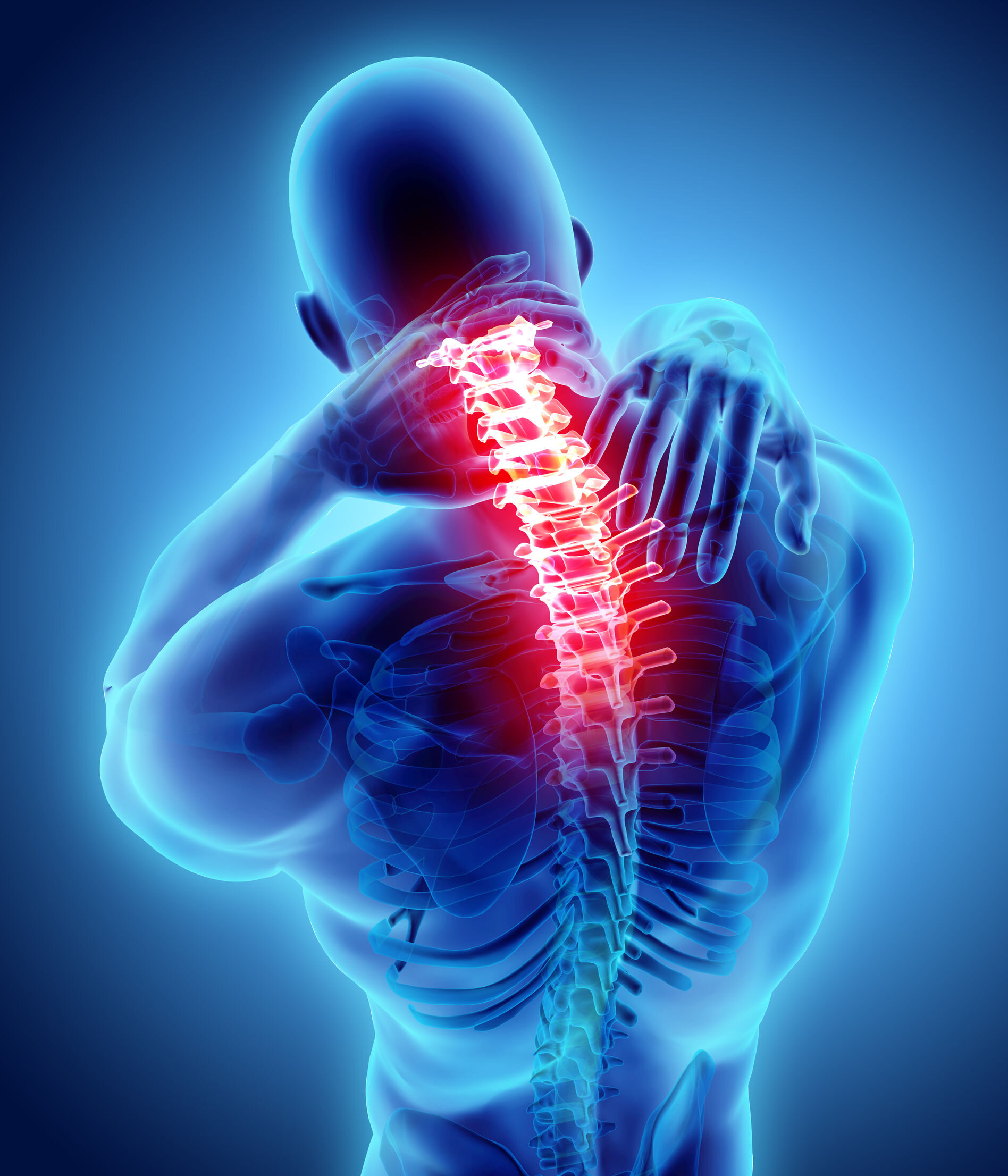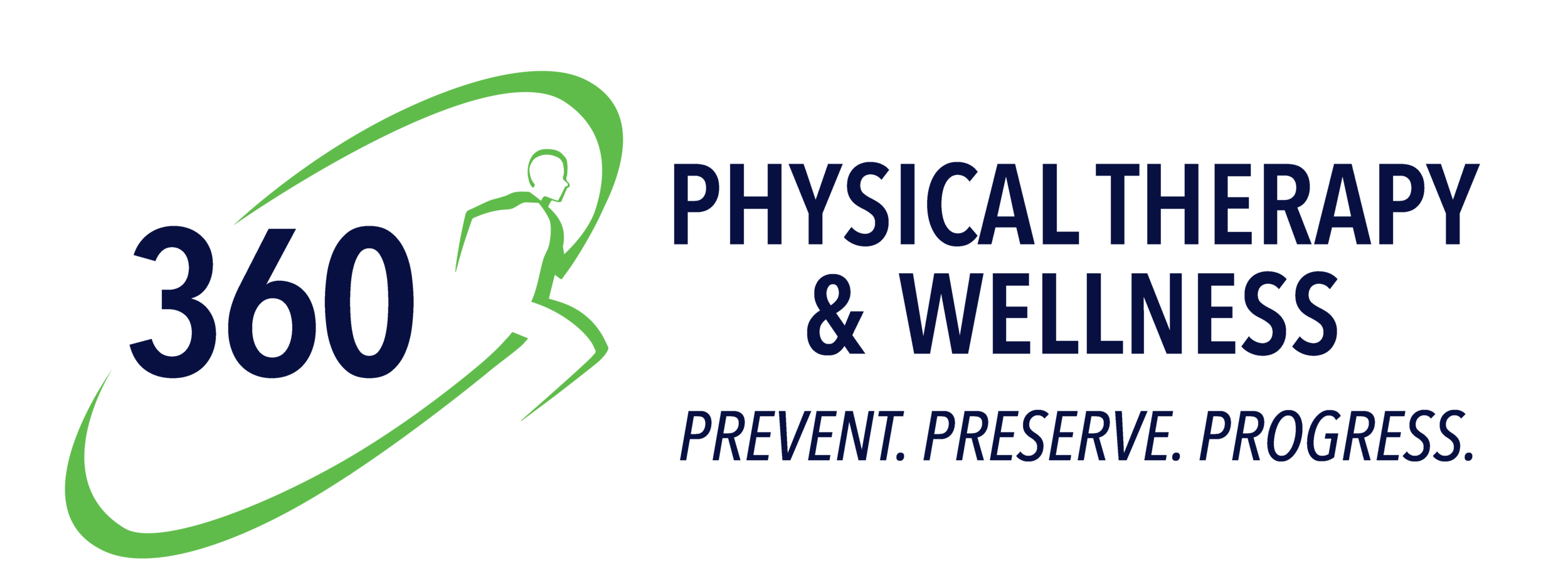
All of us experience pain from time to time. In many cases, pulled muscles or pinched nerves heal with a simple regimen of rest, stretching, and strengthening. Then, there’s the pain that is constant. Your body hurts for weeks, even months on end and it begins to affect everything you do, from social interactions to your work.
If you avoid certain daily activities and are in constant pain and discomfort, you may be suffering from chronic pain syndrome. Chronic pain can cause negative feelings toward general health, lead to social isolation, and even depression. Managing chronic pain is highly individualized and physical therapy should be included in your treatment plan.
You don’t have to live with the stress and anxiety of chronic pain. The physicians at 360 Physical Therapy & Wellness are here to help. Our goal is to find the root cause of your pain, provide relief through conservative therapy methods, and improve your quality of life. Physical therapy for chronic pain syndrome is effective and a great way to minimize the use of medications. Call or email us to schedule your initial consultation today!
WHAT IS CHRONIC PAIN?
Chronic pain is defined as pain and dysfunction that persists on most days for a period longer than three months. In 2016, an estimated 20.4% of U.S. adults were diagnosed with chronic pain and 19.6 million U.S. adults were diagnosed with high-impact chronic pain.
Chronic pain can occur as a result from trauma or injury, an underlying disease such as an autoimmune disease or arthritis, or alongside conditions such as fibromyalgia or Ehlers-Danlos Syndrome (EDS) and persistent headaches/migraines.
Individuals with chronic pain typically complain of constant pain, ability to function or perform daily tasks, sleep disruptions, and mood disturbances. If left untreated, or simply treated with medication, chronic pain poses many health risks including depression, anxiety, and substance dependency.
Continue reading to learn more about conditions associated with chronic pain and how the physicians at 360 Physical Therapy & Wellness apply physical therapy for chronic pain.
CAUSES OF CHRONIC PAIN
Chronic pain is generally caused by a miscommunication between the brain and nervous system. Risk factors include advancing age, a history of trauma or injury, substance use or abuse (including cigarettes and alcohol), mental health, obesity, and conditions such as arthritis and nerve damage.
At 360 Physical Therapy & Wellness, we focus on treating the whole individual. We will work tirelessly to identify the root cause of your pain and create a treatment program specific to your needs.
Our board-certified physicians can help relieve chronic pain associated with the following conditions:
Degenerative joint conditions: Osteoarthritis, rheumatoid arthritis, and degenerative disc disease.
Compressed nerves. Carpal tunnel syndrome, Double Crush Syndrome, sciatica, shoulder impingement and other injuries affecting the muscles and joints that cause pinched or compressed nerves and lead to inflammation, weakness, and pain.
Fibromyalgia. A neurological condition diagnosed by widespread pain and tenderness in various parts of the body. Symptoms also include fatigue, insomnia, and anxiety. A multidisciplinary approach to managing fibromyalgia pain includes physical therapy treatment. Physical therapy for fibromyalgia aims at treating symptoms such as pain, fatigue, deconditioning, muscle weakness, and sleep disturbances.
Complex Regional Pain Syndrome (CRPS). A malfunction in the peripheral or nervous system that causes chronic pain in one extremity (typically in the arm or leg). It is often diagnosed following an injury, surgery, stroke, or heart attack.
Postural Orthostatic Tachycardia Syndrome (POTS). A circulatory dysfunction affecting blood flow, POTS is an orthostatic intolerance disorder with symptoms including dizziness, lightheaded upon standing, and rapid heartbeat. Chronic headaches, stomach aches, joint pain and chest pain are associated with POTS.
Ehlers–Danlos syndrome (EDS). A disease that affects the connective tissue within the body. EDS is characterized by joint hypermobility and skin extensibility (excessive stretching of the skin). EDS is accompanied by chronic joint pain.
Temporomandibular Joint disorder (TMJ) Pain or tenderness located in the jaw joints. The temporomandibular joint acts as a hinge that helps to open and close the mouth, keeping it connected to the skull. Causes of TMJ disorder can be a result of clenching or grinding teeth, an injury to the jaw, arthritis, or genetics. Physical therapy for TMJ disorder includes manual therapy such as mobilization and stretching and strengthening exercises specific to the jaw muscles. Additional physical therapy modalities can include ultrasound and heat and ice therapy.
Soft tissue injuries: Improper healing of muscle and tissue tears can lead to scar tissue and tightness. Muscle tightness inhibits mobility and with time, can lead to chronic pain.
Muscle spasms: Involuntary contractions of muscles (typically in the neck and shoulders) are a result of poor posture, stress, underused or overexerted muscles, or unbalanced nutrition. Muscle spasms can be painful.
PHYSICAL THERAPY FOR CHRONIC PAIN
We are all aware of the scary statistics of opioid abuse affecting our nation. The U.S. Centers for Disease Control and Prevention (CDC) recommends, above all else, nonpharmacologic therapy and nonopioid pharmacologic therapy, including physical therapy in treating chronic pain.
360 Physical Therapy & Wellness of Fulton, MD is dedicated to providing the best physical therapy care for your chronic pain. A variety of manual and physical therapy modalities can be used to treat chronic pain:
Manual therapy. Muscles, joints, or tissues that are inflamed or tense benefit from manual therapy. Your physical therapist will perform skilled, hands-on techniques such as joint manipulation and mobilization, myofascial release, and massage to improve tissue extensibility; increase range of motion; reduce tension; reduce pain; and reduce soft tissue swelling and inflammation.
Joint mobilization/manipulation. Specialized, hands-on manual therapy techniques aimed at decreasing pain, reducing compensations, and improving mobility.
Instrument Assisted Soft Tissue Mobilization (IASTM). A modern version of manual therapy, IASTM breaks down fascial restrictions and scar tissue with a small, ergonomically shaped tool. Studies have shown that IASTM improves range of motion, strength and pain perception following the treatment.
Functional strengthening. Your physical therapist will prescribe exercises individually designed to improve the strength of the muscles surrounding your area of pain. We focus on training specific movement patterns to improve your ability at performing everyday tasks, pain-free.
Therapeutic stretching. Stretching is a common intervention performed during physical therapy to increase muscle length and range of motion and reduce pain.
Dry needling. The certified professionals at 360 Physical Therapy & Wellness use hypodermic needles to deactivate trigger points in muscles, thereby decreasing pain and improving function and performance. Trigger point dry needling is a common technique used to address chronic pain in the neck, back, and shoulder.
Electrical stimulation. A therapeutic treatment that applies electrodes to the surface of the skin, treating muscle spasms and pain. Electrical stimulation maintains muscular strength, reduces inflammation, and improves range of motion. Electrical stimulation for chronic pain is an excellent non-invasive and effective method performed at 360 Physical Therapy & Wellness.
Ultrasound. This therapeutic technique uses sound waves to create a vibration that generates heat. Ultrasound therapy is used to increase blood flow, reduce inflammation, and promote tissue healing. Ultrasound therapy is commonly used in treating bursitis, muscle strains, arthritis, and trauma or injury-induced chronic pain.
Stop living in pain! Schedule your consultation with a physician at 360 Physical Therapy & Wellness today and get rid of the chronic pain that is holding you back from living your best life.


